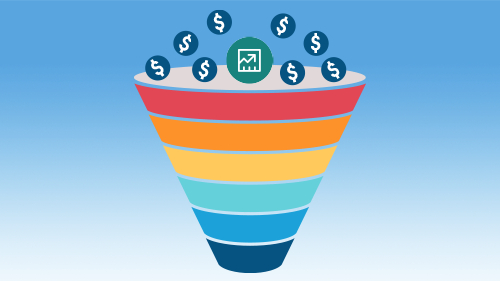A sales funnel is a key marketing strategy that guides potential customers through a structured process from initial contact to conversion and retention. It serves as a predefined path, directing consumer attention towards decision-making and maximizing conversion opportunities. This funnel aligns with various stages of the buying process, from awareness to retention, providing an effective guide for customer interactions at each phase.
In today’s landscape, numerous tools, such as Bitrix24, can assist in creating a sales funnel. Bitrix24 is a comprehensive tool facilitating the efficient creation and management of sales funnels. With its CRM suite, you can customize each funnel stage to suit your business and audience, offering automation features, interaction tracking, and detailed analysis for continuous optimization.
Having a sales funnel is essential for any organization for several reasons. It optimizes productivity by focusing efforts on the most effective stages of the buying process, maximizing results. Additionally, it aids in future projections by providing more accurate profitability analysis and setting long-term goals. Bitrix24, when incorporated into your strategies, not only enhances the efficiency of marketing and sales efforts but also strengthens business relationships by providing advanced CRM tools to identify weaknesses and specific needs at each funnel stage.
5 Steps to Create an Effective Sales Funnel
The purchasing process is a complex journey that individuals or organizations undertake before deciding to do business with a company. Understanding this journey is crucial for building effective marketing and sales strategies. Here are five steps to create an effective sales funnel that directs the flow of potential customers to your organization.
- Understanding the Buying Process:
Understanding the buying process is essential for designing an effective sales funnel. This process comprises six stages reflecting the psychology and social sciences involved in consumer decision-making. It begins with awareness, where the customer recognizes a need, followed by familiarity, consideration, selection, retention, and promotion. These stages form the foundation for developing effective strategies at each sales funnel phase. - Defining the Sales Funnel:
Defining and designing a sales funnel involves customizing the stages of the buying process to fit your audience and business needs. Identifying clear objectives for each phase, developing specific strategies, and leveraging technological tools like CRM systems are essential steps. This structured approach guides potential customers from awareness to retention, optimizing conversion opportunities and customer loyalty. - Recognizing the Importance of Your Funnel:
Emphasize the need to increase productivity, facilitate future projections, and solidify business relationships. By optimizing marketing campaigns for each stage of the consumer journey, a better understanding of the ideal customer is achieved, focusing efforts on high-performing aspects. Integrating a sales funnel into marketing strategies allows for more accurate profitability analysis and establishes medium to long-term goals. Additionally, relying on data, the funnel offers the ability to identify weaknesses in the sales process, revealing specific customer needs at each stage and enabling the creation of customized action plans through advanced CRM tools like Bitrix24. - Understanding the Sales Process:
The key to a successful sales funnel lies in understanding the sales process and its stages. Creating an ideal customer profile is crucial, ensuring the funnel is optimized to attract prospects aligned with that profile, fostering strong relationships from the beginning. Customizing the buying process by segmenting the funnel into steps that align with each customer’s purchasing process ensures a synergistic interaction. Allowing customers to actively participate, addressing their questions and concerns through informative content, facilitates autonomous decision-making. - Considering Every Part of the Funnel:
It is essential to consider every part of the sales funnel as each section plays a crucial role in guiding and converting potential customers throughout the buying process. These parts provide a strategic structure that adapts to different stages of the consumer journey, allowing for a more effective and personalized approach. These parts include:
- Top: Targeting awareness and familiarity stages, using engaging general content for the audience.
- Middle: Focused on the consideration stage, providing detailed information on technical features and comparative advantages.
- Bottom: Complex strategies targeting a limited audience, focusing on the customer-company relationship, using discounts, free trials, webinars, and direct contact.
In summary, a sales funnel is more than just a tool; it is a detailed map of the customer journey from initial contact to brand loyalty. Implementing a well-defined sales funnel is crucial for any business’s success in the digital era. This map serves as a strategic guide covering all stages of the consumer buying process, starting from awareness, followed by familiarity, consideration, selection, retention, and, finally, promotion. Each stage requires a unique and personalized approach, made possible by advanced CRM and analytics tools that platforms like Bitrix24 offer.




